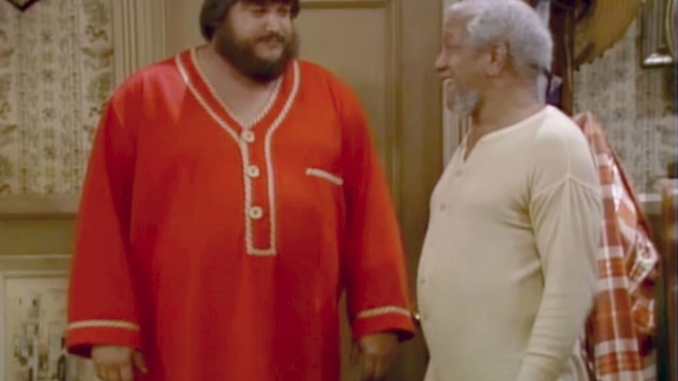
As we celebrate the 50th anniversary of Sanford and Son, it’s hard not to reflect on its profound impact on television and comedy. This groundbreaking sitcom, which aired from 1972 to 1977, not only entertained audiences but also sparked conversations about race, class, and family dynamics. While it was a pioneer in many ways, it also faced criticism for its portrayal of African American life. Let’s dive into the legacy of Sanford and Son, exploring its dual nature as a beloved classic and a controversial piece of television history.
The Birth of a Classic
Creating the Show
Sanford and Son was created by Norman Lear and Bud Yorkin, who were known for pushing boundaries in television. The show was based on the British series Steptoe and Son, but it quickly adapted to reflect the unique cultural landscape of America in the 1970s.
The Premise
The series follows Fred Sanford, played by the legendary Redd Foxx, and his son Lamont, portrayed by Demond Wilson. Together, they run a junkyard in Los Angeles, navigating the ups and downs of life while engaging in hilarious banter and heartfelt moments.
A Groundbreaking Comedy
Pioneering Representation
One of the most significant aspects of Sanford and Son was its representation of African American characters in a leading role. At a time when Black actors were often relegated to stereotypical roles, the show provided a platform for complex, relatable characters.
Humor with a Message
The humor in Sanford and Son was sharp and often laced with social commentary. The show tackled issues such as poverty, racism, and generational conflict, making it more than just a comedy—it was a reflection of society.
The Double-Edged Sword
Criticism of Stereotypes
Despite its groundbreaking nature, Sanford and Son faced criticism for perpetuating certain stereotypes. Some viewers felt that the show reinforced negative images of African Americans, particularly through Fred Sanford’s gruff demeanor and the junkyard setting.
Balancing Act
This duality—being both a pioneer and a source of controversy—makes Sanford and Son a double-edged sword in television history. While it broke new ground, it also sparked debates about representation and authenticity in media.
Cultural Impact and Legacy
Influencing Future Generations
Sanford and Son paved the way for future sitcoms featuring Black families, such as The Cosby Show and Fresh Prince of Bel-Air. Its influence can be seen in the way these shows approached humor and social issues.
Enduring Popularity
Even after its original run, Sanford and Son has remained popular through syndication and streaming platforms. New generations continue to discover the show, proving that its humor and heart are timeless.
Behind the Scenes: The Cast and Crew
Redd Foxx: The Heart of the Show
Redd Foxx’s portrayal of Fred Sanford is iconic. His comedic timing, improvisational skills, and ability to deliver poignant moments made him a beloved figure in television history.
Demond Wilson: The Perfect Foil
Demond Wilson’s portrayal of Lamont provided a perfect counterbalance to Foxx’s character. Their father-son dynamic was relatable and often reflected the struggles of real-life families.
The Show’s Evolution
Changing Times
As the 1970s progressed, Sanford and Son evolved to reflect the changing social landscape. The show began to address more contemporary issues, including drug use and economic hardship.
Final Seasons and Legacy
The final seasons saw a decline in viewership, leading to its cancellation in 1977. However, the legacy of Sanford and Son continued to resonate, influencing countless comedians and writers.
The Show’s Relevance Today
A Reflection of Society
Today, Sanford and Son remains relevant as it reflects ongoing conversations about race, class, and family dynamics. Its humor continues to resonate, reminding us of the importance of laughter in addressing serious issues.
